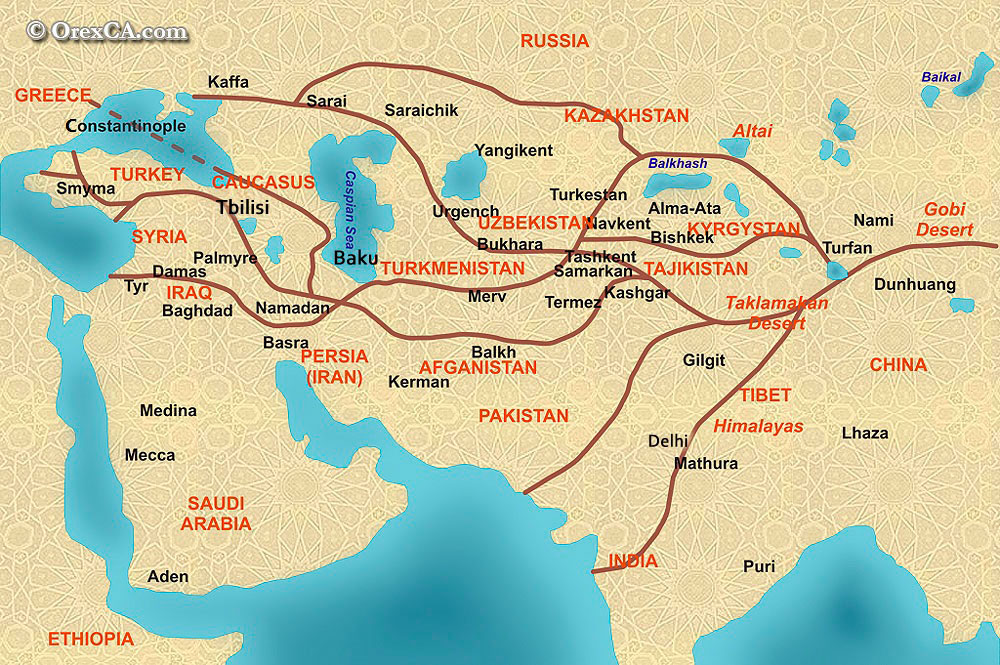 The Silk Road brought people far across Asia and Europe, bring different aspects of their culture with them. With these people came items and goods from different culture that some people of the west had not seen, and these things became more readily available for people of the west. Other than goods, religion traveled along the Silk Road. Buddhism spread great distances and much of the reason why it spread was because of the Silk Road.
The Silk Road brought people far across Asia and Europe, bring different aspects of their culture with them. With these people came items and goods from different culture that some people of the west had not seen, and these things became more readily available for people of the west. Other than goods, religion traveled along the Silk Road. Buddhism spread great distances and much of the reason why it spread was because of the Silk Road.The Silk Road was used in forms of communications as well. In the times of the Mongol Empire the Silk Road was used as a major route for communication and spreading of ideas for the Mongols, more than most were open to ideas and religions. Kubilai Khan, for example was one of the most sympathetic and understanding of most religions. During the mongol reign many people across Asia and other lands took part in this trade, spreading culture, religion and many other aspects of their lives all across the continent.
http://www.ess.uci.edu/~oliver/silk.html








